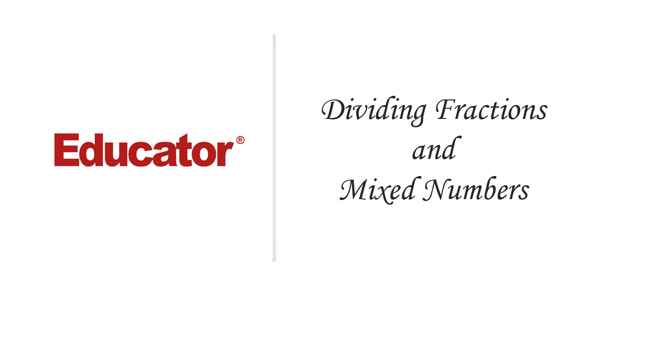
This is a quick preview of the lesson. For full access, please Log In or Sign up.
For more information, please see full course syllabus of Basic Math
For more information, please see full course syllabus of Basic Math
Basic Math Dividing Fractions and Mixed Numbers
Lecture Description
In this lesson our instructor talks about dividing fractions and mixed numbers. She explains the first step which is to change mixed numbers to improper fractions. The next step is to flip the second fraction. The last step is to multiply the fractions. Four complete extra example videos round up this lesson.
Bookmark & Share
Embed
Share this knowledge with your friends!
Copy & Paste this embed code into your website’s HTML
Please ensure that your website editor is in text mode when you paste the code.(In Wordpress, the mode button is on the top right corner.)
×
Since this lesson is not free, only the preview will appear on your website.
- - Allow users to view the embedded video in full-size.
Next Lecture
Previous Lecture










































 Answer Engine
Answer Engine



0 answers
Post by Jason Sun on May 19, 2020
This is interesting
1 answer
Last reply by: SIMON XENITELLIS
Thu Jul 4, 2019 3:49 PM
Post by LeTaotao Xue on September 22, 2018
why do you need to flip the fractions to change the operation
0 answers
Post by Mohamed Loirraqi on January 7, 2016
Why we flip when we multiply?
1 answer
Last reply by: Jason Sun
Tue May 19, 2020 9:46 AM
Post by Mohamed Loirraqi on January 7, 2016
Why we flip when we multiply?
0 answers
Post by EN N on November 8, 2015
Hello,
In practice question number 9, the answer and steps are wrong. The question is 6 1/2 divided by 9 1/2. For step one it says 13/2 divided by 28/2.
0 answers
Post by Oscar Prado on September 15, 2015
How can you simplify the answer instead of the problem?
1 answer
Thu Jan 2, 2014 5:05 PM
Post by Dmitry Kischukov on December 26, 2013
can i multiplay like a g
_ . _ =y
r t
1 answer
Thu Jan 2, 2014 4:59 PM
Post by Mashrur Elahi on April 25, 2013
Can you use parentheses for fractions?
2 answers
Last reply by: LeTaotao Xue
Sat Sep 22, 2018 3:57 PM
Post by Anwar Alasmari on January 2, 2013
Yes, you can, but you may face some difficults to simplify them that you have to take into consideration the position of numbers. I think you can follow an easy way (as showed on this lecture) to solve any problems.
1 answer
Fri Aug 19, 2011 11:46 PM
Post by Carlos Garcia on July 19, 2011
Hello,
I have a question. Can I simplify the fractions when they are dividing before coverting it into a multiplication?